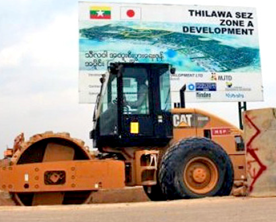India plans to establish a Special Economic Zone (SEZ) in Sittwe, Myanmar as it aims to expand its presence in Southeast Asia. This is the same region where China and Japan are in the midst of developing their SEZs. The new development is projected to be established about 37 miles north of Sittwe city.
The purpose behind the proposed SEZ lies in India’s goal to extend its footprints in Southeast Asia against the growing economic presence of Japan and China in the region. This is another demonstration of India’s ‘Act East’ policy commitment which showcases such activities as a proposed India-Myanmar-Thailand cross-border trilateral passage that is designed to increase trade among the countries. Another ‘Act East’ project is the Kaladan Multi-modal Transit Transport Project which will link India’s eastern commercial hub of Kolkata with Sittwe by sea; it will also link India’s landlocked northeastern states with Myanmar by boat route and land transport, connecting mainland Southeast Asia and inner India.
The potential SEZ and the Kaladan project would conjointly emerge as a comprehensive captive market for investments from India, said Indian officials working on the plan. India has already built a $ 120 million deep-sea port in Sittwe as part of the Kaladan Multi-modal Transit Transport Project. India’s plan of setting up a SEZ in Myanmar comes late as its regional competitors China and Japan are already implementing Kyaukphyu and Thilawa SEZs respectively in Kyaukphyu, Rakhine State and Yangon Region. Thailand is another foreign player in regard to the development of a SEZ in Myanmar with their involvement in Dawei SEZ project in the south.










